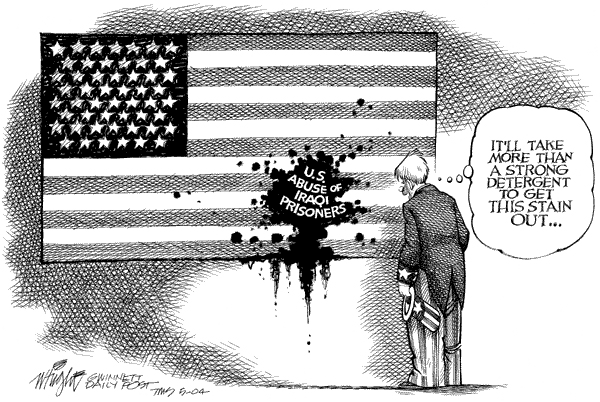Metaphor
A metaphor is described as "a figure of speech that makes a comparison between two things that are basically dissimilar."1 In other words, it describes one thing in terms of another. It is comparative, and thus goes beyond a mere descriptive adjective (e.g. the "bright moon" is not a metaphor). A metaphor describes one object as being or having the characteristics of a second object. Unlike a simile, a metaphor "does not use connective words such as like, as, or resembles in making the comparison."2 However, many metaphors use words like "of" or "is" to link one part to another, including "a heart of gold" and "time is a thief". On the other hand, the toughest metaphors are indirect and implied. If I say, "Let me throw some light on the subject", I'm using light as a metaphor to describe the process of explanation and understanding. Many idiomatic phrases make use of these hidden comparisons, and they are challenging for people new to the English language.
Other examples of metaphor include "life is a dream" (describing life in terms of a dream), "the foundation of knowledge" (knowledge in terms of house construction), and "he was scraping the bottom of the barrel" (a lack of talent described in terms of a barren fruit container). A metaphor that is extended throughout a poem or story, and may involve further related comparisons, is an extended metaphor. If we use a metaphor so often that we don't realize it, the phrase may become a "dead" metaphor (e.g. "foot of the hill," "leg of the chair").
Sometimes metaphor is defined in very broad terms, and is used as another term for "figurative language" or "figure of speech". In this sense, "metaphorical language" incorporates all comparative language, including similes and symbols. For your English exams, however, it is safer to use the more formal phrase "figurative language."
It can be argued that human communication is intrinsically metaphorical, and that human communication as we know it couldn't exist without metaphor. Some have argued that our most essential mental concepts (e.g. time and space) are inherently suffused with metaphorical descriptions, so that "the way we think, what we experience, and what we do every day is very much a matter of metaphor."3 It does seem that metaphors are part of our everyday discourse. Below is a metaphor that is both linguistic and visual, and is commonly used in literature and current affairs. What is the metaphor?

In the cartoon above, the embarrassment of US abuse of Iraqi prisoners is considered to be a "stain" on America's reputation. Thus, moral embarrassment or guilt is described in terms of an ugly stain. It echoes Lady Macbeth's cry of "Out damn spot!" (Uncle Sam and the flag are symbols of the United States, and thus, in a broad sense, also metaphors.)
|
So how is metaphor connected to metonymy and synecdoche? Metonymy and synecdoche are cousins to the metaphor. [The use of familial relationships is itself metaphorical.] As with all metaphorical language, they describe something in terms of something else; they are comparative. Metonymy is a metaphor where something close to the thing described ends up standing for the thing described. Thus, instead of saying "the Canadian government", the media often uses the metonymic term "Ottawa". The city of Ottawa, where the federal government resides, is closely related to the government, and its use as a substitute makes it an example of metonymy. A synecdoche (sin-eck-du-kee) is a close sibling of metonymy. A synecdoche is a term in which something that's part of the thing described (as in, fundamentally attached) ends up standing for the thing described. When a captain yells, "All hands on deck!", he is referring to his sailors; an attached part (the hand) signifies the whole. The "crown", which stands for government (especially in the Canadian court system) is closely related but not fundamentally attached to the thing being described, so it's an example of metonymy, not synecdoche. A metaphor, properly speaking, compares two totally unrelated items, and is not spatially linked to its partner like metonymy and synecdoche. Metonymy and synecdoche are both listed as English 12 concepts. However, while they appear as options on provincial exams, I have never seen either one as the correct option (unlike, say, metaphor, simile, personification and alliteration). They tend to be more active concepts in English Literature 12. |
1. Damrosch, Leopold et al., Adventures in English Literature (San Diego:
gggHarcourt Brace Jovanovich, 1985), p. 990.
2. Ibid.
3. Lakoff, George and M. Johnson, Metaphors We Live By, 2nd E. (Chicago:
gggUniversity of Chicago Press, 2003), p. 3.